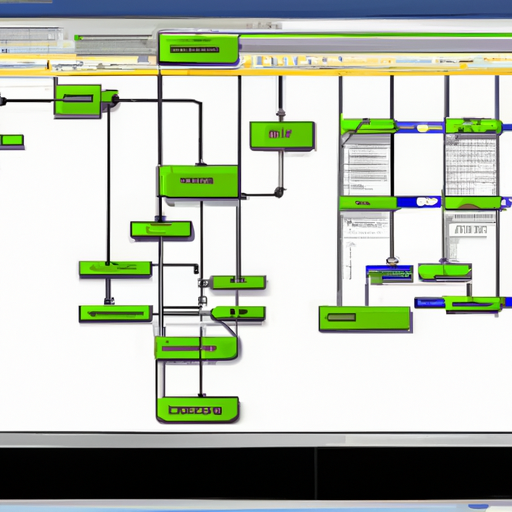How Do Attackers Use DNS Attacks?
In today’s interconnected world, cyber attackers are constantly finding new ways to exploit vulnerabilities and infiltrate networks. One method that they often employ is DNS attacks. By manipulating the Domain Name System (DNS), attackers can redirect unsuspecting users to malicious websites or intercept their communications. This article explores the various techniques used by attackers to carry out DNS attacks, shedding light on the potential risks and providing insights on how to protect yourself and your organization from these malicious activities.
DNS Attacks Overview
What are DNS attacks?
DNS attacks, or Domain Name System attacks, are malicious activities aimed at exploiting vulnerabilities in the DNS infrastructure. The DNS is responsible for translating domain names into IP addresses, allowing users to access websites and other online resources easily. Attackers use various techniques to manipulate or disrupt the DNS, thus compromising the security and availability of internet services.
Why do attackers use DNS attacks?
Attackers employ DNS attacks for several reasons. One common motive is to disrupt the operations of targeted organizations or individuals. By compromising the DNS, attackers can redirect users to malicious websites, intercept sensitive data, or block access to legitimate services. DNS attacks can also be used to spread malware, launch phishing campaigns, or execute man-in-the-middle attacks, enabling attackers to steal credentials or perform other unauthorized actions.
Categories of DNS attacks
There are several categories of DNS attacks, each targeting different aspects of the DNS infrastructure. Some of the most prevalent types include:
- DNS Cache Poisoning: Manipulating DNS cache information to redirect users to malicious websites.
- DNS Amplification: Exploiting misconfigured DNS servers to launch a massive volume of traffic toward a targeted IP address.
- DNS Tunneling: Using DNS protocol to bypass network security measures and exfiltrate data covertly.
- Distributed Denial of Service (DDoS) Attacks: Overwhelming a target’s DNS infrastructure with traffic to render it unreachable.
- Domain Hijacking: Illegally gaining control over a domain for financial gain or reputation damage.
- Pharming Attacks: Redirecting users to fraudulent websites by tampering with DNS entries.
- Man-in-the-Middle Attacks: Intercepting communications between users and legitimate websites to eavesdrop or manipulate data.
- NXDOMAIN Attacks: Exploiting DNS server vulnerabilities to respond with false negatives, preventing access to legitimate domains.
- DNS Spoofing: Forging DNS responses to redirect users to malicious servers or intercept their communications.
With a comprehensive understanding of these categories, it is crucial to delve into each type in detail to better appreciate their implications and countermeasures.
DNS Cache Poisoning
Introduction to DNS cache poisoning
DNS cache poisoning is an attack technique where attackers manipulate the DNS cache of a target, causing it to store incorrect or malicious DNS information. When users request a DNS translation, their systems rely on the cached information rather than performing a fresh DNS lookup. This allows attackers to redirect users to fraudulent websites, intercept communication, or simply cause confusion and disruption.
How does DNS cache poisoning work?
In a typical DNS cache poisoning attack, an attacker exploits vulnerabilities in the DNS protocol or infrastructure, injecting false DNS records into the cache of recursive DNS servers. The attacker spoofs the DNS responses, making them appear legitimate. Once the poisoned entries are stored in the cache, any subsequent requests for those domain names will be resolved to the attacker’s chosen IP addresses.
Examples of DNS cache poisoning attacks
One notable example of DNS cache poisoning is the famous Kaminsky attack discovered by security researcher Dan Kaminsky. This attack targeted the DNS vulnerabilities of recursive DNS servers and allowed attackers to inject malicious DNS records into caches, leading to widespread redirection of web traffic.
Another example is the “The Great DNS Hijack of 2019,” where attackers managed to poison the DNS caches of various Middle Eastern countries, redirecting their citizens to malicious versions of popular websites to collect login credentials and other sensitive data.
Preventing DNS cache poisoning
To protect against DNS cache poisoning attacks, several countermeasures can be implemented. Employing DNSSEC (Domain Name System Security Extensions), which cryptographically signs DNS records, helps ensure the authenticity and integrity of DNS responses. Additionally, keeping DNS software and systems up to date with the latest security patches and configurations reduces vulnerability to attack. implementing source IP verification mechanisms and limiting the use of open DNS resolvers can also mitigate the risk of cache poisoning.
DNS Amplification
Understanding DNS amplification attacks
DNS amplification attacks leverage the characteristics of DNS protocols and improperly configured DNS servers to generate a significant volume of traffic directed towards a victim’s IP address. By exploiting the large response-to-request ratio in DNS queries, attackers can overwhelm the target’s infrastructure, causing service disruption or even a complete denial of service.
How does DNS amplification work?
In a DNS amplification attack, the attacker sends small DNS queries to open recursive DNS servers, falsely impersonating the victim’s IP address as the source. The attacker manipulates the header of the DNS query to request a large response, significantly larger than the original query. When the DNS server sends its response, it is directed to the victim’s IP address instead of the attacker’s.
As a result, a small query generates a significantly larger response, effectively amplifying the volume of traffic directed towards the victim. This can consume the target’s available network bandwidth, overwhelming their infrastructure and causing service disruptions.
Mitigating DNS amplification attacks
To mitigate DNS amplification attacks, network administrators should implement several countermeasures. Firstly, securing DNS servers by disabling recursion on public-facing servers significantly reduces their susceptibility to being used in amplification attacks. Additionally, access control lists can be implemented to restrict DNS queries only to authorized users or networks. Regularly monitoring DNS traffic can help identify abnormalities and potential attack patterns, enabling proactive defense measures. Finally, implementing rate limiting mechanisms or traffic filtering can mitigate the impact of DNS amplification attacks.
DNS Tunneling
Explaining DNS tunneling
DNS tunneling is a method that utilizes the DNS protocol to bypass network security measures and exfiltrate data covertly. By encapsulating data within DNS queries or responses, attackers can transmit information across networks without raising suspicion, as DNS traffic is typically allowed on most networks.
Techniques used in DNS tunneling attacks
Attackers employ various techniques to conduct DNS tunneling attacks:
- DNS Request Tunneling: Attackers encode data within DNS queries, using labels or subdomains to act as a carrier for the information they want to transmit.
- DNS Response Tunneling: Attackers encode data within DNS responses, utilizing fields like the authoritative name server or resource record value to smuggle information.
- Null-Value Encoding: Attackers utilize DNS labels with null-value characters to obscure data transmission within DNS traffic, evading detection.
- Time-To-Live (TTL) Manipulation: Attackers can manipulate the TTL field in DNS responses to control the timing and order of data transmission, making it harder to detect.
Detecting and preventing DNS tunneling attacks
Network administrators can employ several techniques to detect and prevent DNS tunneling attacks. Implementing deep packet inspection (DPI) tools can analyze the content of DNS traffic, identify anomalies, and detect suspicious tunneling behavior. Additionally, utilizing intrusion detection and prevention systems (IDPS) with specific DNS tunneling detection capabilities can help identify illicit activities. DNS traffic monitoring, anomaly detection, and periodic audit logs analysis also play a crucial role in early detection and prevention. Finally, consistent patching of DNS servers, applying security best practices, and restricting recursive DNS resolution can further reduce the risk of DNS tunneling attacks.








